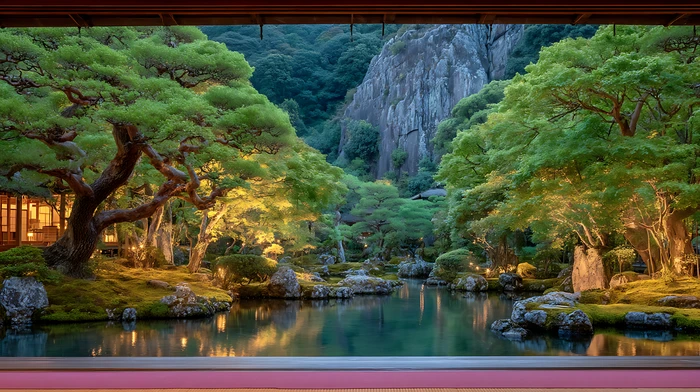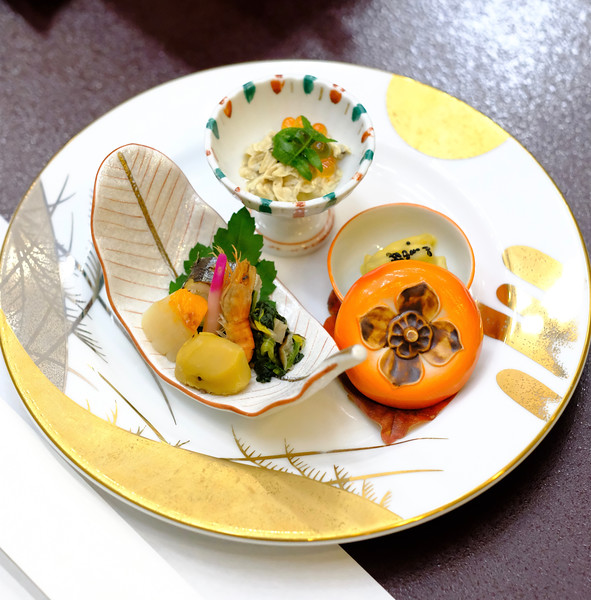Finding Zen in Kyoto: An Austin UX Designer's Escape to a Traditional Ryokan

After a grueling 14-hour flight from Austin, landing in Kyoto felt like stepping through a portal. The city hummed with a quiet energy, a stark contrast to the relentless buzz of the digital world I was trying to escape. But it wasn't until I arrived at the Ryokan that the real transformation began. As I slipped off my shoes in the Genkan, the entrance area, and onto the cool, smooth wood, a wave of calm washed over me. The air itself seemed to vibrate with tranquility. This wasn't just a place to stay; it was a sanctuary.
The traditional architecture of the Ryokan immediately transported me to another time.
The Ryokan's Charm: A Journey Through Time
My Ryokan, let’s call it Tawaraya for the sake of this story (although it was a similar experience to what you might find at Hiiragiya or Tamahan), was a meticulously restored 17th-century inn. It wasn't just old; it was a living testament to Japanese history and design. From the moment I entered, I was enveloped in an atmosphere of understated elegance.
The floors were covered in tatami mats, their woven texture grounding me with each step. Shoji screens filtered the sunlight, casting a soft, diffused glow that banished harsh shadows. Low tables, perfectly placed for tea or contemplation, sat in the center of the room. A simple calligraphy scroll adorned one wall, its brushstrokes telling a silent story. And subtly permeating everything was the delicate fragrance of incense, a constant reminder to be present.
But perhaps the most captivating feature was the inner garden. Visible through large glass windows that spanned the entire wall of my room, it was a miniature landscape of carefully arranged rocks, moss, and meticulously pruned trees. It was a living work of art, designed to soothe the soul and inspire reflection. Even the soft light filtering through the Shoji screens contributed to the overall peaceful ambiance. You could feel the Ryokan’s history in every carefully placed stone and perfectly polished beam. It wasn't just a place to sleep; it was a place to connect with the past.
Cultural Immersion: Beyond the Guidebook
The beauty of a Ryokan stay extends far beyond the physical space. It's about immersing yourself in Japanese culture, embracing traditions, and connecting with people on a deeper level. The staff at Tawaraya were the epitome of Japanese hospitality – warm, welcoming, and always eager to assist, even with my limited Japanese.
One of the highlights of my stay was participating in a traditional tea ceremony. I sat on a Zabuton (floor cushion), carefully observing the server's precise and deliberate movements as she prepared the matcha. The bitter taste of the tea, balanced by the sweetness of the wagashi (Japanese confection), was a revelation. It was more than just a drink; it was a mindful experience, a ritual steeped in history and tradition.
Another unforgettable moment was visiting a local artisan's workshop, where I watched a craftsman create intricate lacquerware. The patience and skill required to produce these beautiful objects was astounding. While the language barrier was definitely present, we found ways to communicate through gestures, smiles, and a shared appreciation for the craft. It was a reminder that connection transcends words.
 Participating in a traditional tea ceremony was a truly immersive cultural experience.
Participating in a traditional tea ceremony was a truly immersive cultural experience.
Food and Mindfulness: A Feast for the Senses
Evenings at the Ryokan were a celebration of Japanese cuisine. Each night, I was treated to a multi-course Kaiseki dinner, a culinary art form that showcases the freshest seasonal ingredients in a balanced and harmonious way.
The presentation of each dish was a work of art in itself, with meticulous attention paid to color, texture, and arrangement. One dish featured incredibly fresh sashimi, paired with locally sourced wasabi that had a subtle sweetness and a gentle kick. Another highlight was a delicate clear broth soup, its flavors so pure and refined that they danced on my palate.
The entire experience was an exercise in mindful eating. I savored each bite, paying attention to the flavors, textures, and aromas. It was a welcome departure from the rushed and often mindless eating habits I had back home. This mindful approach to food permeated my entire stay, contributing significantly to my overall sense of well-being.
 The Kaiseki dinner was a feast for both the eyes and the palate, emphasizing balance and harmony.
The Kaiseki dinner was a feast for both the eyes and the palate, emphasizing balance and harmony.
Sustainable Practices: Respecting Tradition and the Environment
Beyond the beauty and cultural immersion, I was also impressed by the Ryokan's commitment to sustainable practices. They prioritized using locally sourced ingredients in their cuisine, minimizing waste through thoughtful planning, and actively supporting local artisans by showcasing their crafts.
It was clear that the Ryokan saw itself as a steward of Kyoto's cultural heritage. By preserving traditional crafts and supporting local businesses, they were contributing to the long-term sustainability of the community. This commitment to responsible tourism made my stay even more meaningful.
Reflection and UX Design Inspiration: Finding Harmony in Design
As a UX designer, I couldn't help but see parallels between the principles of Japanese design and the user-centered approach of my own field. The Ryokan's emphasis on simplicity, functionality, and harmony resonated deeply with me.
The minimalist aesthetic, the intuitive layout, and the seamless integration of nature all contributed to a sense of calm and well-being. It reminded me of the importance of creating digital experiences that are not only visually appealing but also emotionally resonant.
The focus on omotenashi – the Japanese concept of selfless hospitality – also struck a chord. It reinforced the idea that good design is about anticipating the needs of the user and creating a positive and memorable experience. I left Kyoto with a renewed sense of purpose, inspired to create digital products that are both beautiful and beneficial.
Conclusion: Unplug, Reconnect, and Discover
My stay at the Ryokan was more than just a vacation; it was a transformative experience. It was a chance to disconnect from the digital world, reconnect with myself, and discover a different way of life. If you're looking for a truly authentic and immersive travel experience, I highly recommend considering a Ryokan stay. It's an investment in your well-being and a chance to experience the magic of Japan firsthand.
If you're interested in experiencing a similar stay, consider checking out options at Ryokans like Hiiragiya (replace with real link to a comparable ryokan if necessary and if allowed in the prompt).